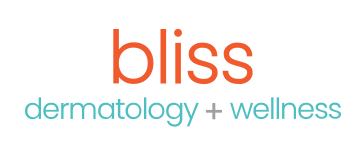Rosacea
Rosacea is a common, long-term skin condition that typically affects the face, especially the cheeks, nose, forehead, and chin. The symptoms of rosacea can include persistent facial redness, pimple-like bumps resembling acne, facial flushing, dry eyes, and even nasal swelling. Though rosacea can’t be cured, there are various treatments and lifestyle changes that can help reduce symptoms and improve skin appearance.
Causes of Rosacea
The exact cause of rosacea is not fully understood, but several factors may contribute to its development. Proposed contributing factors include abnormalities in immunity, inflammatory reactions to cutaneous microorganisms, vascular dysfunction, ultraviolet light exposure, and genetic factors. One possible cause is an overgrowth of microscopic skin mites known as Demodex, which naturally live on the skin, particularly around the nose and cheeks. When these mites proliferate, they may trigger rosacea symptoms. Additionally, a malfunction in a skin-protecting protein called cathelicidin may also play a role. This protein helps the skin fend off infection, and when it doesn’t function properly, it can contribute to the development of rosacea.
Risk Factors for Rosacea
While rosacea can affect anyone, certain individuals are more likely to develop the condition. Women with lighter skin are at a higher risk, particularly those between the ages of 30 and 60. Those with a family history of rosacea are more likely to develop it themselves, suggesting a genetic predisposition to the condition.
Rosacea Symptoms
Symptoms of rosacea can vary in severity but often include:
- Facial flushing and persistent redness
- Dilated blood vessels visible on the skin
- Skin sensitivity
- Swollen, red bumps that resemble acne
- A dry, gritty sensation in the eyes
- An enlarged or irregularly shaped nose (in severe cases)
Rosacea Triggers
Several factors can trigger or exacerbate rosacea symptoms. Sun exposure is one of the most common triggers, as ultraviolet light can aggravate redness and inflammation. Spicy foods, hot drinks, and temperature extremes—whether from hot or cold weather—can also cause flare-ups. Alcohol is known to trigger symptoms in many individuals with rosacea. Stress and intense physical exercise can also make symptoms worse, as can harsh skin care products or medications. Identifying and avoiding personal triggers is key to managing rosacea effectively.
Diagnosing Rosacea
A dermatology provider will carefully evaluate your skin to diagnose rosacea. Several other skin conditions, like acne, seborrheic dermatitis, or allergies, can resemble rosacea. A physical exam and medical history review will help differentiate rosacea from these conditions. Without proper treatment, rosacea can worsen over time.
Rosacea Treatments
Treatment for rosacea varies depending on the severity of the condition and which areas of the face are affected. A key part of managing rosacea involves identifying and avoiding specific triggers, such as sun exposure, spicy foods, and stress. Daily sun protection is crucial to prevent ultraviolet light from aggravating symptoms. Topical or oral medications and skin care products are commonly used to reduce inflammation and redness. In cases of more permanent redness or visible blood vessels, laser therapies can effectively target and reduce these areas. Combining lifestyle changes with the appropriate treatments can significantly help control rosacea symptoms and prevent flare-ups.
Schedule an Appointment
If you’re struggling with rosacea, it’s essential to consult a dermatologist. At Bliss Dermatology + Wellness, our team is here to provide expert care and guidance. We offer personalized treatment plans to help manage and alleviate rosacea symptoms. Our practice is recognized as one of the top dermatology providers on the Gulf Coast of Florida, with convenient locations in Venice and Englewood. Schedule a consultation today to start improving your skin health.
